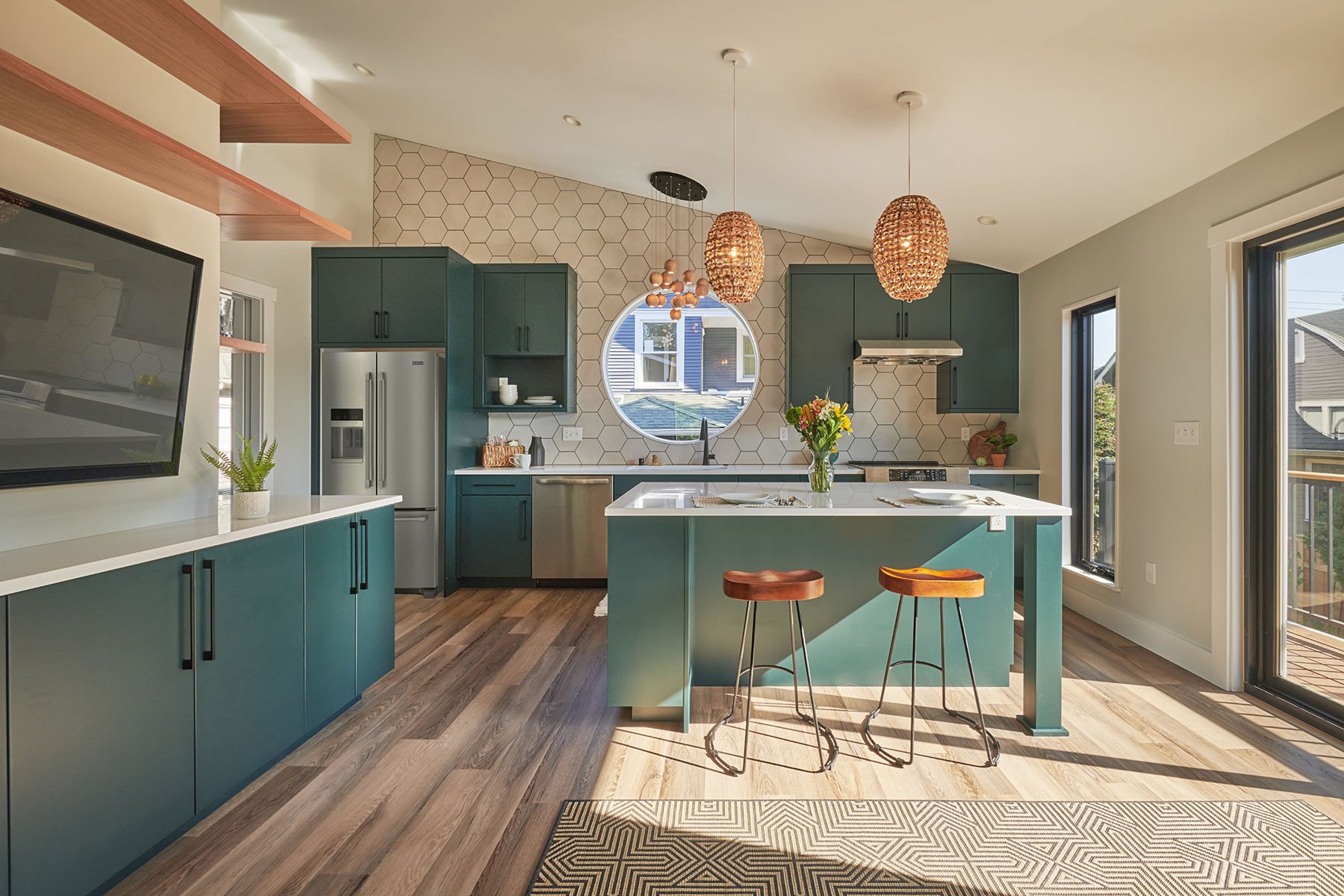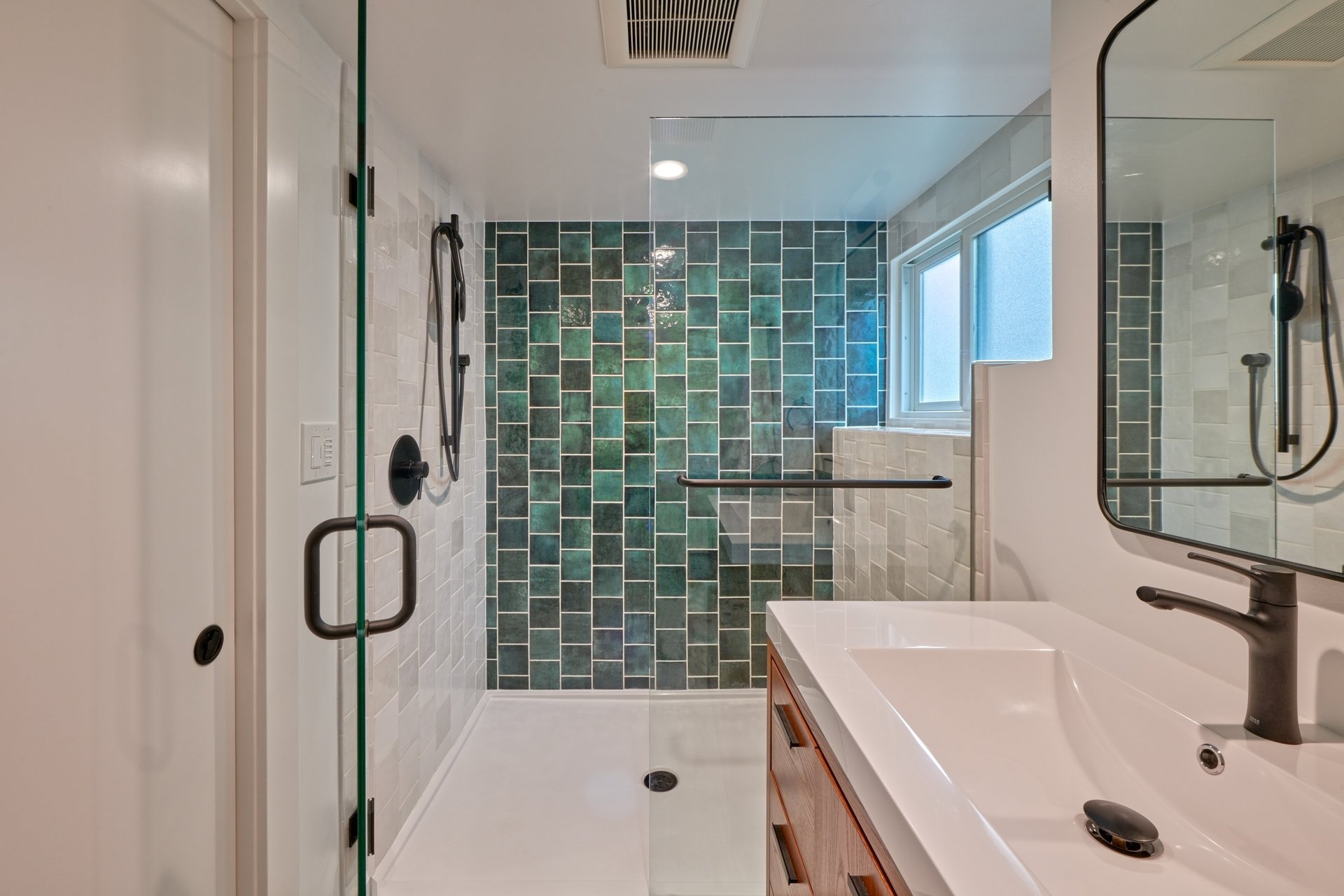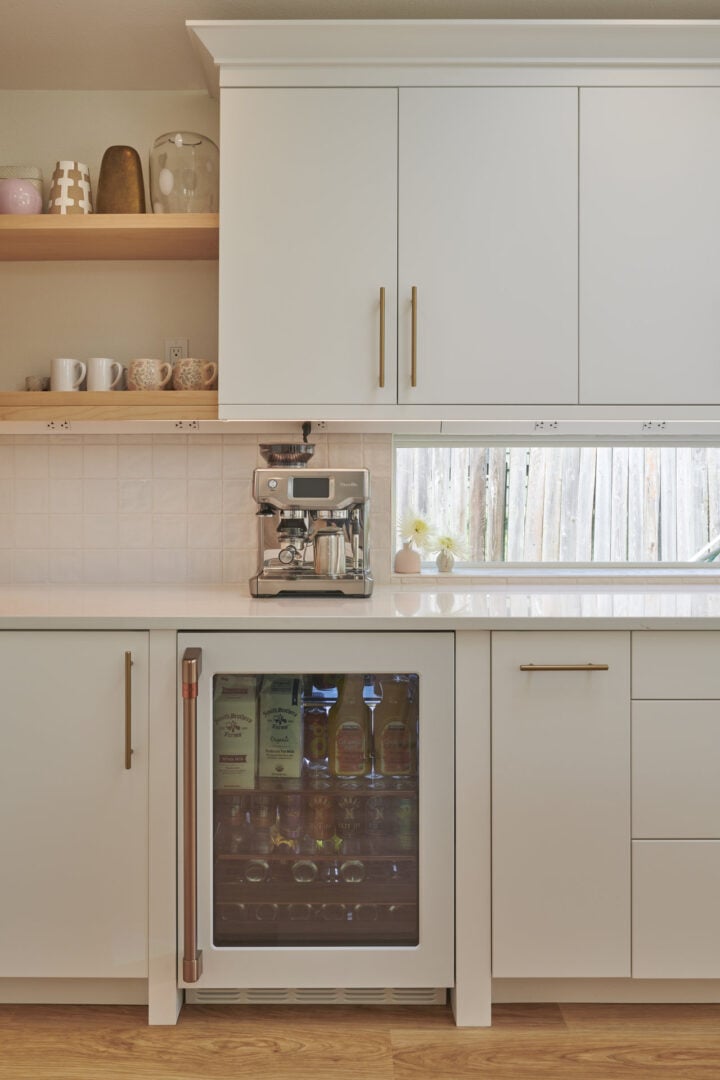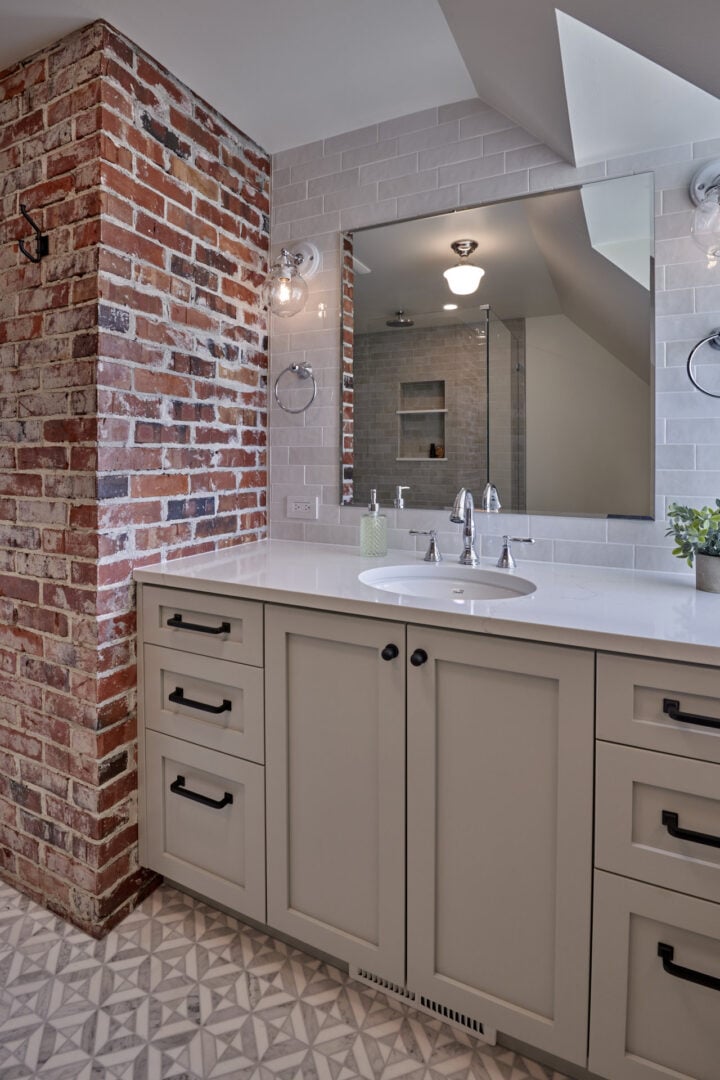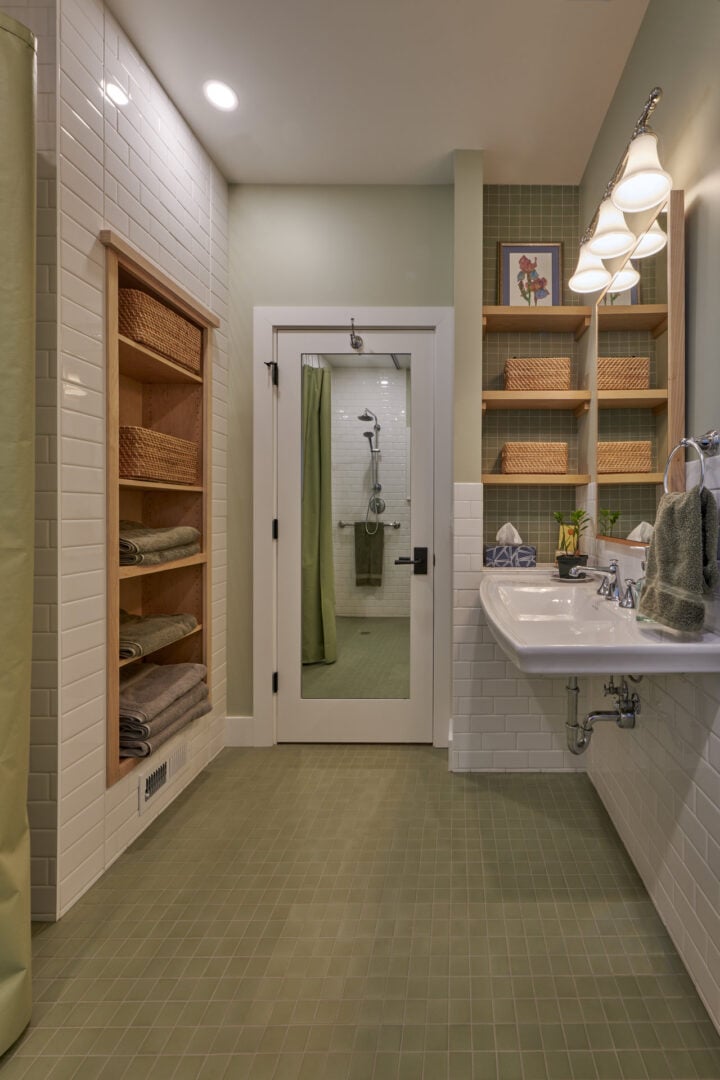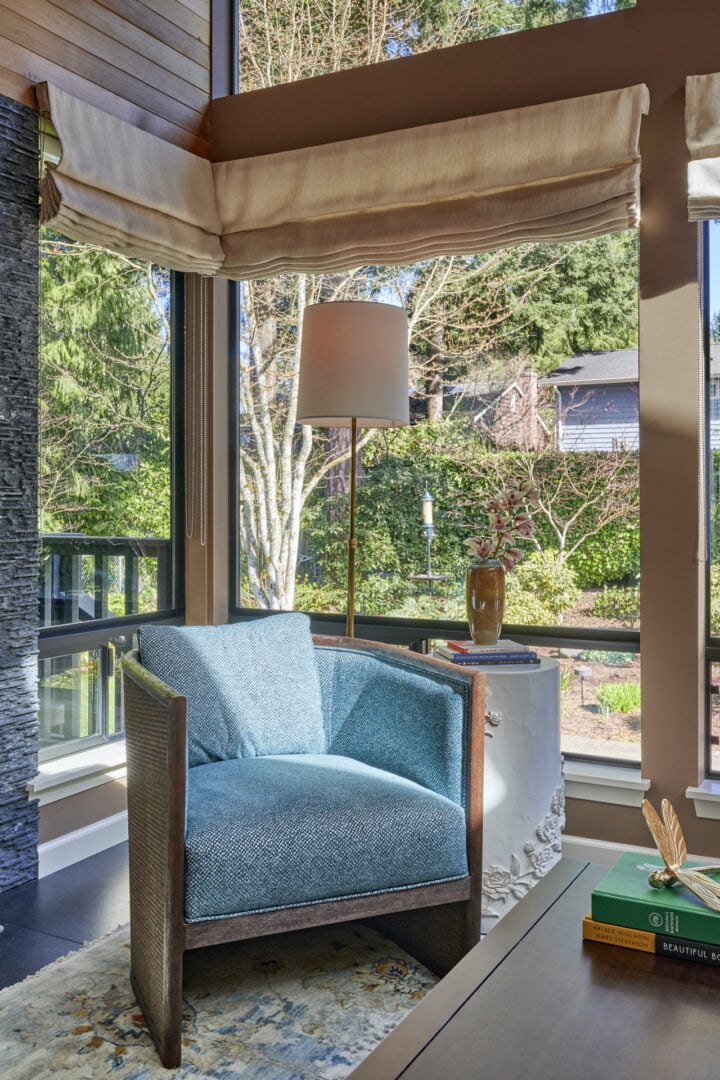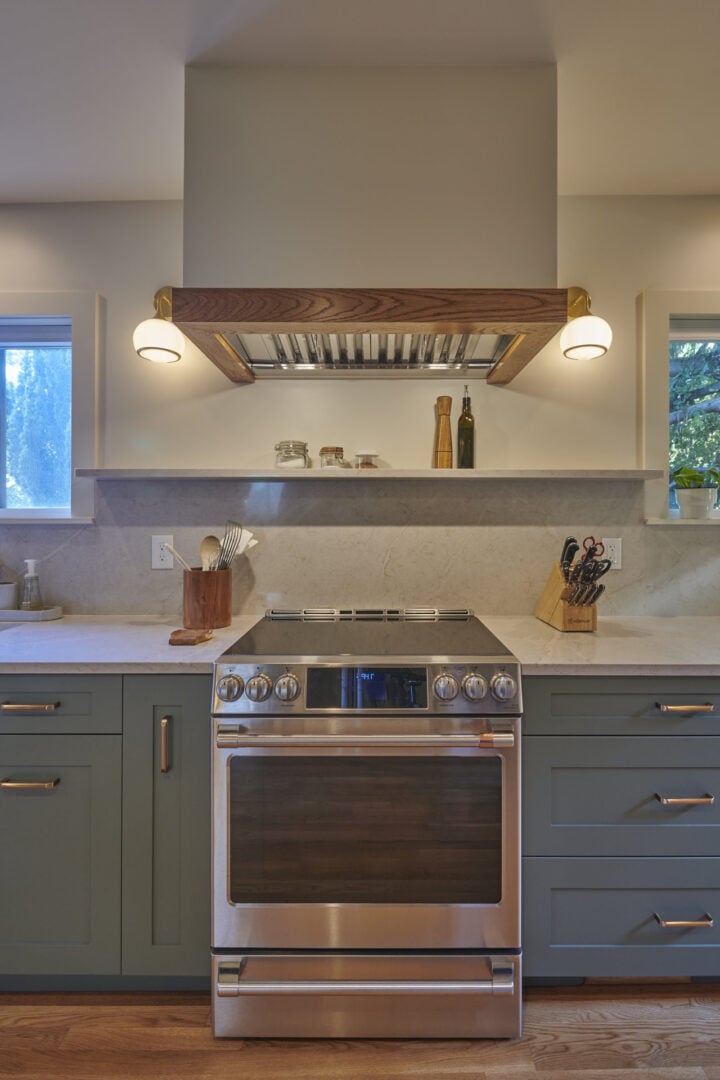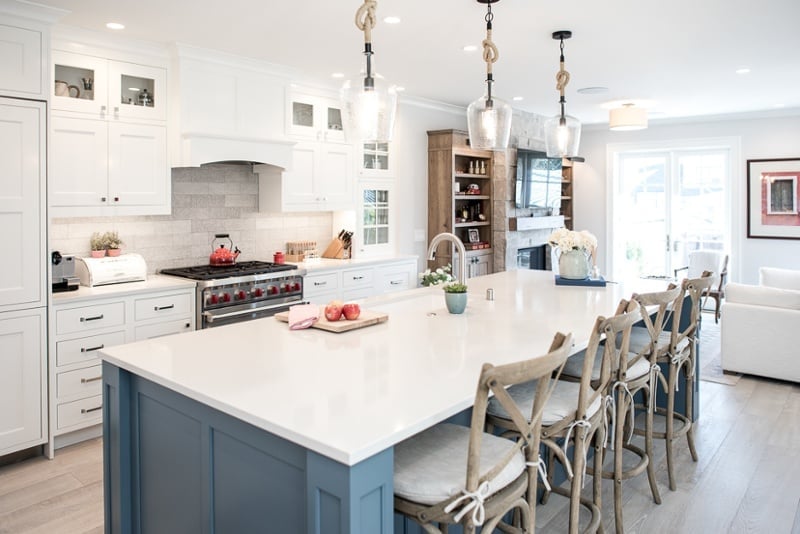
Kitchen islands have become an almost essential element of modern kitchen design. It’s no wonder—they’re a convenient place to prepare and serve food and are an ideal spot for people to gather while you’re finishing some last minute meal prep. Islands are popular because they allow you to be productive and socialize at the same time. But one aspect of designing the perfect kitchen that is often overlooked is the island lighting.
A thoughtful island lighting design can transform your kitchen island from a barely functional space into the centerpiece of your kitchen. Proper lighting can brighten important areas, enhancing visibility and functionality, making it easier to cook and entertain. However, because kitchen islands are designed to serve several purposes at once, zeroing in on the proper lighting layout can be a challenge.
In this guide, we’ll walk you through the five main types of kitchen island lighting and the pros and cons of each. By the end, you’ll have the insight you need to make your island both functional and beautiful.
5 Types of Kitchen Island Lighting to Elevate Your Space
1. Pendant Lights: Timeless and Versatile
A pendant light (or lights) placed over the island can illuminate your kitchen by providing both functional island lighting and aesthetic benefits, making it the “jewelry” of the space. These lights are suspended from the ceiling by a chain, wire, or pole and are perfect for any directed task lighting. The style of these fixtures adds to the overall impression and charm of your kitchen. However, in choosing the right pendants for your kitchen island, it is important to make sure that these lights won’t overwhelm the kitchen’s look.
Pendant lights usually come in groups of three, or occasionally two for shorter islands. Some pendant sets are wired to a single wide base that requires just one junction box. For wider spacing and a much cleaner look, I recommend individually wired pendants that each have their own junction box (but are all on the same circuit).
When choosing pendant lights:
-
Consider your kitchen’s style. Select fixtures that complement your overall design without overwhelming the space.
-
Match the size of the pendants to your island. Larger pendants work best with longer islands and higher ceilings.
Pro Tip: Hang your pendants about 30–35 inches above the countertop for optimal island lighting. Whether you choose two pendants for a shorter island or three for a longer one, this spacing ensures both function and aesthetic appeal.
2. Clear Glass Pendants: Sleek and Minimalist

A style of pendant light fixture that has gotten very popular in recent years is the clear glass globe pendant or even bare-bulb pendant (often seen with vintage-style Edison bulbs). These ethereal fixtures are a popular choice for creating an open and airy feel and enhancing the decor of the kitchen. Unlike traditional metal or frosted-glass pendants which can obstruct sight lines in the kitchen, clear glass pendants allow light to flow freely, making the space feel larger and less obstructed.
Advantages:
-
They don’t block sight lines, making them ideal for open-concept kitchens.
-
Low-wattage Edison bulbs can create a warm, vintage ambiance.
Drawbacks:
-
Clear glass can produce harsh light if paired with the wrong bulbs.
-
These fixtures are more decorative than functional, so you’ll need to supplement with other island lighting, such as recessed lights.
3. Recessed Lights: Clean and Practical
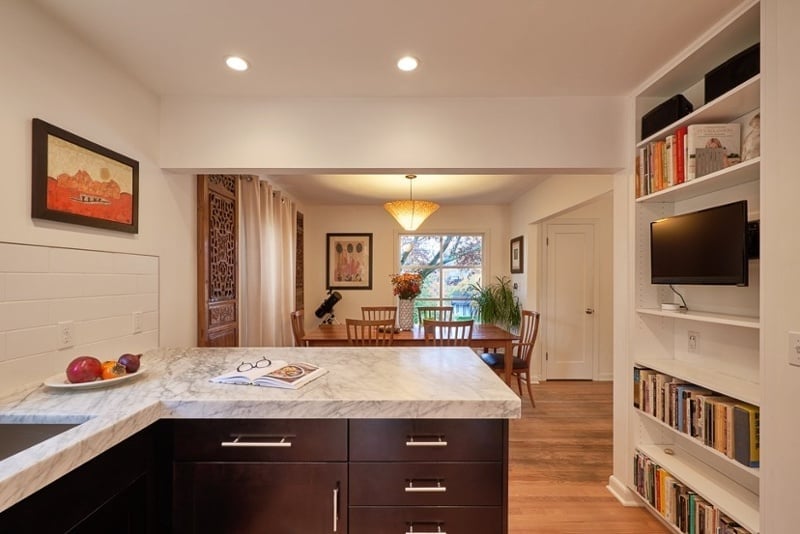
While pendants are the perfect way to add a focal point to your kitchen, that’s not always what’s desired. Some homeowners opt for the cleaner look of recessed can lights to optimize their kitchen space with effective island lighting. Recessed lighting is ideal for homes with low ceilings or where you want a streamlined look. I also like them for smaller kitchens with attached islands because they lead to a more expansive feeling.
Recessed lights are also referred to as pot lights, can lights, or high hat lights. Most modern designs now have built-in LED lighting elements that are energy efficient and last longer than ordinary light bulbs. Choose the brand carefully. Higher-end models will have better color rendering and a more pleasing light. Be sure you like the color temperature and color rendering because the LED element is designed to last for many years, even a decade or more.
Also pay attention to how focused the light is. Some recessed lights act as spotlights, which are great for adding task lighting to your island’s countertop. Others produce a less-focused floodlight effect, which can be useful for general room lighting. If you have planned the placement of your recessed lights directly over the island, go for the spotlight option. If you are working with recessed lights that are in the general area of your island but not centered above it, you may have to choose a floodlight model.
Pro Tip: If your recessed lights aren’t centered directly above your island, opt for floodlight models to avoid shadows.
4. Flush-Mount and Semi-Flush Fixtures: A Middle Ground
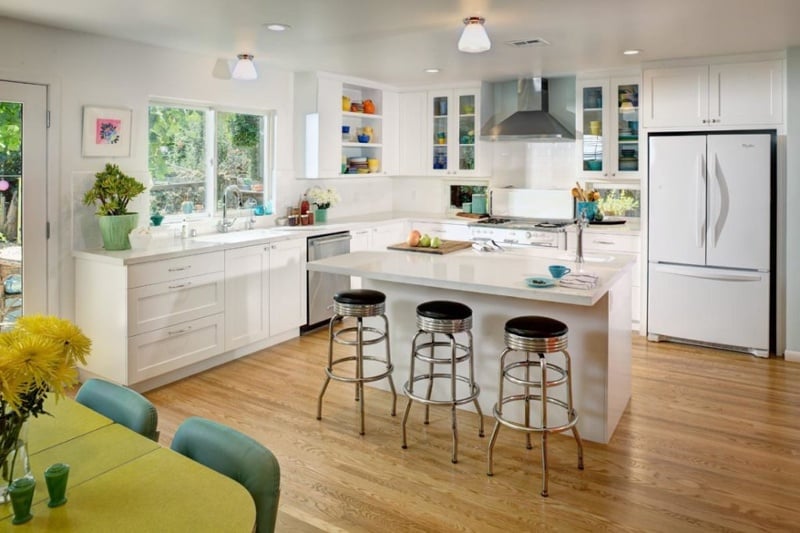
If pendants feel too bold and recessed lights too understated, flush-mount or semi-flush lights might be the perfect compromise. These fixtures sit close to the ceiling and provide broad, even light, complementing various kitchen designs and styles.
I think these fixtures can look great in a smaller kitchen, especially one in which there are fewer lights installed, and the over-island fixtures are called upon to help light the entire room. Because flush-mount fixtures are mounted right up on the ceiling, they can throw a lot of light and have a wider, more diffuse focus than recessed lights. I recommend frosted or milk glass globes to ensure that the light is diffuse. The harsher light of a clear glass globe or bare bulbs could cast too many hard shadows.
Another benefit of flush-mount island lighting is that it catches less dust, which means you don’t have to clean them as often. The installation of this type of light is also relatively easy.
5. Chandeliers: For a Touch of Luxury
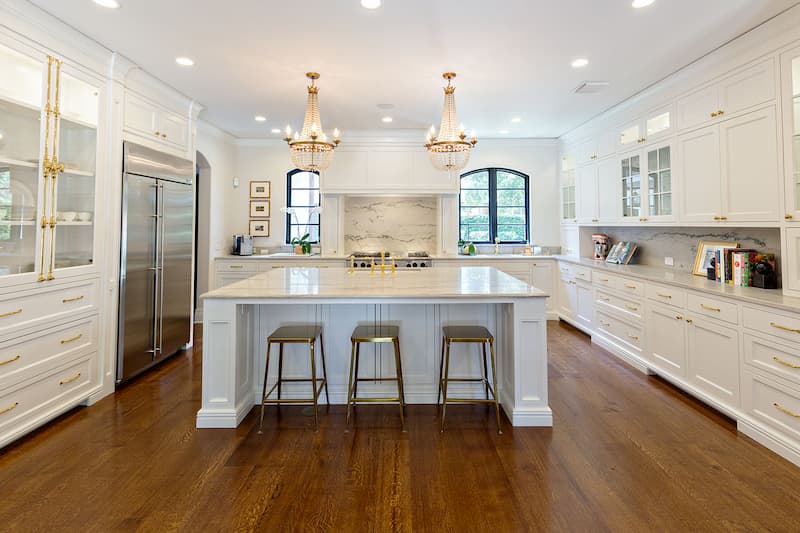
Chandeliers aren’t just for dining rooms anymore—they can also add a touch of elegance to your kitchen island as luxurious island lights. For a luxurious look, consider hanging a chandelier-style fixture or fixtures over your kitchen island in crystal or glass. These types of lights are often larger than pendant lights, but still provide adequate island lighting over your kitchen counter to make food preparation easier.
However, just like pendant lights and other hanging lights, make sure to take the ceiling height into consideration. Chandelier fixtures have the potential to break up the space, and they tend to work best in larger kitchens with high ceilings.
Pro Tip: Hang chandeliers at the same height as pendant lights (30–35 inches above the island) for consistency and optimal lighting.
How to Choose the Right Kitchen Island Lighting
When selecting kitchen island lighting, ask yourself:
-
What is the primary purpose of the lighting? Is it for tasks, ambiance or both?
-
How much space do I have? Larger islands and higher ceilings allow for bolder lighting choices.
-
Does the style complement my kitchen design? The right lighting should enhance, not detract from, your overall aesthetic.
-
Are linear pendants a good fit for my kitchen island? These sleek, minimalist fixtures are a popular trend in modern kitchen design.
Ready to Remodel Your Seattle Kitchen? Let’s Chat!
Thinking about remodeling your Seattle home? We’re a team of experienced designers and builders ready to tackle your next major remodeling project. We’ll listen to your needs and help you create a custom design that will transform your space and elevate your home. We love incorporating versatile lighting solutions that enhance different spaces throughout your home. Contact us today to learn more. Let’s get started!
Pin this article to remember it for later
